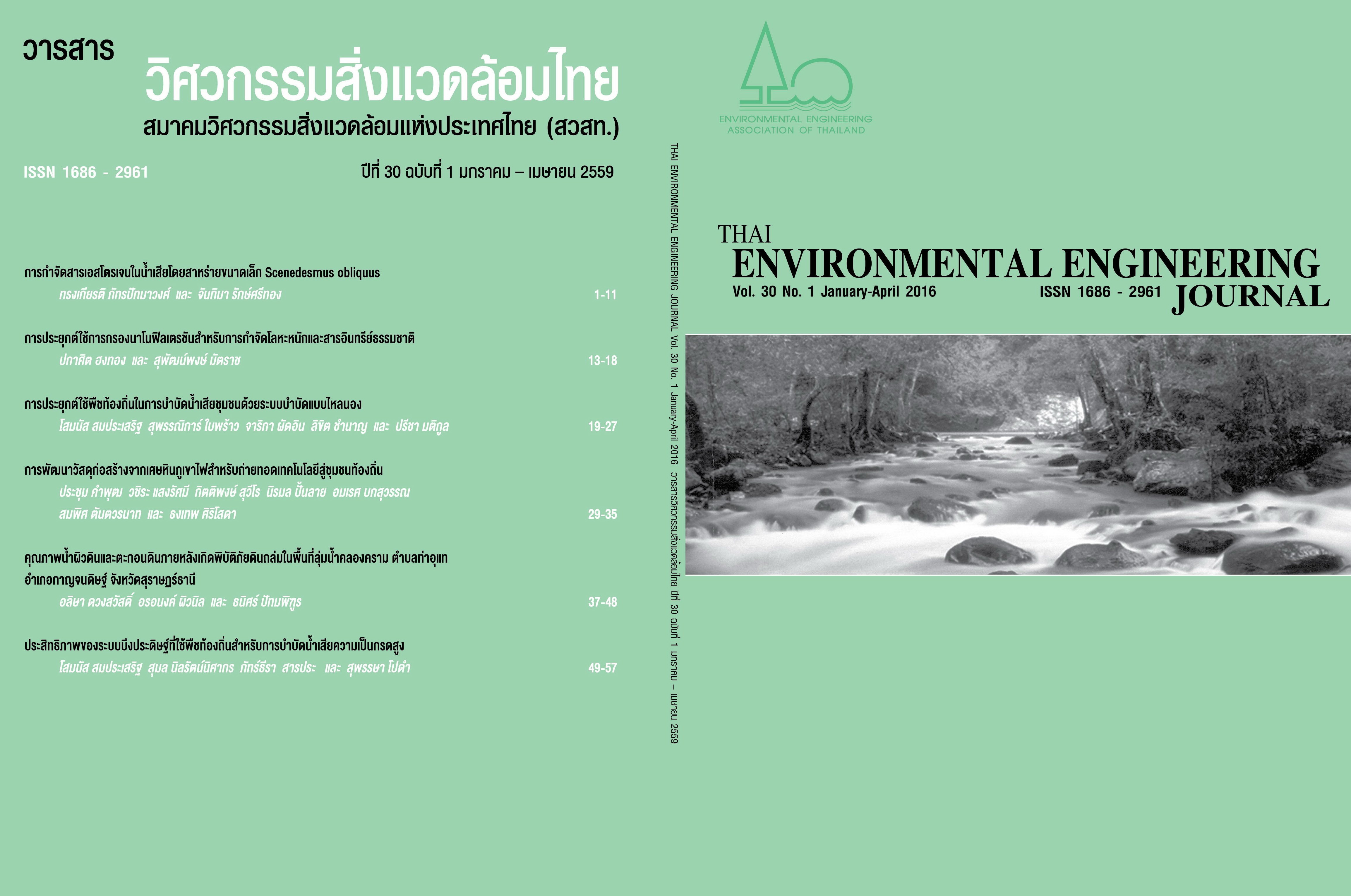Efficiencies of Constructed Wetland Systems Using Native Plants for Treatment of Strong Acidity Wastewater
Main Article Content
Abstract
This research studied the treatment efficiency of high acidity wastewater using two types of plant Canna spp. and Acmellaoleracea (L.) which are the native plants in Mea Tam water shade Phayao province, the northern part of Thailand. Six laboratory scale models of the horizontal subsurface flow constructed wetland system were set to treat the synthetic wastewater having pH control at 4 and 5. The synthetic wastewater was the mixture of domestic wastewater and acetic acid. The wastewaters were fed at 5 cm/d. The results revealed that Acmellaoleracea (L.) could adapt and grow in the pH 5 wastewater. The average growth rate of Acmellaoleracea (L.) and Canna spp. were 0.95 and 0.85 cm/d, respectively. The averaged removal efficiencies of COD, TKN and Ortho-P were 83%, 14% and 36% in the pH 5 model planted with Acmellaoleracea (L.). However, it was found that both plant species could not tolerate in the experimental model with pH 4 wastewater and removal efficiencies of the system trended to decrease with the an increasing experiment time.
Article Details
References
[2] Supawadee Boonprot. 2014. Treatment of Thai fermented rice noodle factory wastewater by limestone equalization and natural treatment system. Thesis, Kasetsart University, Thailand.
[3] Usa Onthong, Vikanda Thongnueakeang and Orasa Anan. 2008. The chemical properties and wastewater treatment from the rubber sheet production by local material and natural zeolite. Thesis, Thaksin University, Thailand.
[4] Somanat Somprasert and Urairat Sangchan. 2011. Efficiency of constructed wetland system treating pickled shallot and garlic wastewater. Thai Environmental Engineering Journal,Vol.25 No.3, 55-60.
[5] Somanat Somprasert, Sumol Nilratnisakorn and Jarunan Manassa. 2014. Screening of local plants in Mea Tum Watershade in wastewater treatment.Proceeding of the 13th National Environmental Conference. 26-28 March 2014. Twin Tower Hotel, Bangkok, Thailand.
[6] Vymazal, J. 1998. Removal Mechanisms and Types of Constructed Wetlands. Constructed Wetlands for Wastewater Treatment in Europe. Leiden : Backhuys Publishers, pp. 16-66.
[7] Henze M., Harremoes P., Jansen J. and Arvin E. 1997. Wastewater treatment – Biological and chemical processes. Springer, 2nd edition, Berlin. pp.81.
[8] Randall C.W., Barnard J.L. and Stensel H.D. 1992. Design and retrofit of wastewater treatment plants for biological nutrient removal. Water Quality Management Library, 5, Technomic, Lancaster.


